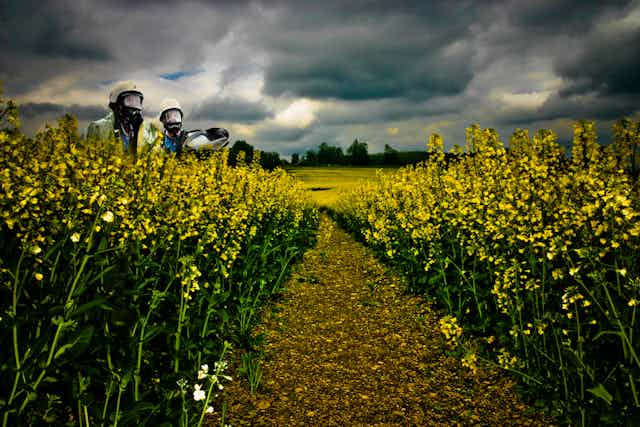In this second instalment of GM in Australia – a series looking at the facts, ethics, regulations and research into genetically modified crops – David Tribe walks us through the bodies responsible for GM policy and oversight.
In the past, new crops were introduced into the food supply without any formal scientific evaluation. Humans learned by trial and error how to safely prepare foods such as cassava and potato, even though they can be toxic.
With the advent of crop genetic engineering in the 1980s, public controversy and intense public scrutiny over genetically modified (GM) foods meant that the trial and error method of discovering whether new GM foods were safe became unacceptable.
Scientific safety assessment of new GM foods as well as government regulation of their introduction was introduced in many countries.
In Australia, this occurred during the major policy reform of all Australian food safety regulation, through the revision of the national Food Standards Code (1994-2002).
During this period, safety assessment of GM foods became the responsibility of Food Standards Australia New Zealand (FSANZ). Section 1.5.2 of the Food Standards Code defines the requirements for the compulsory pre-market assessment and labelling of foods produced by gene technology.
Comparative safety assessment for new whole foods
Food scientists carrying out GM food safety assessments realised that unintended variation in potentially toxic non-nutrient plant chemicals was a possible source of hazard in new GM crop varieties.

The presence of thousands of potentially toxic natural substances in plant foods meant that the safety assessment of GM foods had to be done by different procedures than those that had worked well with food additives and synthetic pesticides.
Regulators realised that if the hundreds of thousands of natural substances present in plant foods – such as soybeans or maize – were subjected to the same standards used with food additives and synthetic pesticides, all food – GM or non-GM – would fail regulatory standards.
A solution to this quandary was developed. Relative safety of GM foods is assessed by systematically looking for all the chemical differences that can be found between:
- a GM food and
- an otherwise comparable non-GM food that can be presumed to be already safe because of its history of safe use.
If no meaningful differences are detectable in a new crop variety, the GM food can be assumed to be at least as safe as its non-GM counterpart.
The standards agency FSANZ provides many further details of how safety assessment of GM foods is carried out, before they are allowed to enter the commercial marketplace.
Box 4.1 from their introductory booklet on the topic gives the main features of the process.

Who’s involved in setting standards?
Most GM crops are commodities that are extensively traded on world markets, such as maize, soybeans and canola. These have to meet food and regulatory standards in several different jurisdictions (such as in the US, the EU, Japan and China).
In practice, traded GM commodities have to pass regulatory scrutiny in counties to which they are exported. The safety assessment frameworks in these different trading countries have a substantial degree of consistency.
The UN forum Codex Alimentarius Commission is the major international intergovernmental forum in which this safety framework was developed. (Learn more about Codex in the video below.)
Codex has established international guidelines for the safety assessment of foods derived from modern biotechnology. The Australian protocols for the pre-market safety assessment of GM foods are congruous with Codex principles.
Codex emphasises the use of sound scientific evidence for food risk assessment, and the separation of risk policy and risk management from scientific risk assessment. In Australia, the management of GM food safety follows these principles.
Food regulatory policy and political oversight are decided by an Australian intergovernmental board called the Legislative and Governance Forum on Food Regulation.
GM safety assessment and food standards development are carried out by FSANZ.
In establishing standards and evaluating pre-market applications for the commercialisation of GM foods, FSANZ interacts with other agencies – in particular the Gene Technology Regulator, whose responsibilities include licensing the deliberate environmental release of genetically modified organisms.
Genetically modified foods have now been in the marketplace for nearly two decades without any harmful effects identified.
The absence of any evidence pointing to the lack of food safety in the recent farmer court case in Western Australia (fought over the unintended presence of genetically modified canola plants on another farmer’s property), underlines the overall conclusion that there is no credible evidence of any food safety risk with the GM foods that have been approved so far.
More tangible problems of food safety – such as the mould toxins that can ruin staple grains and cause cancer in developing countries should now get more attention.
Further reading:
GM techniques: from the field to the laboratory (and back again)
Safety first – assessing the health risks of GM foods
Because we can, does it mean we should? The ethics of GM foods

